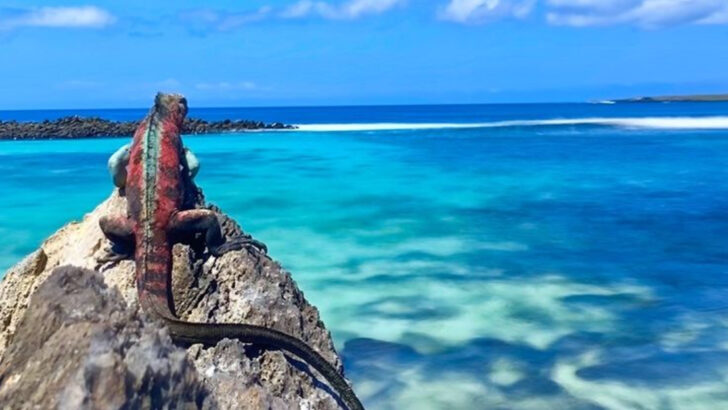The marine iguana, found exclusively in the Galapagos Islands, is a unique creature with an incredible ability: it’s the only lizard that swims in the ocean.
These remarkable reptiles have adapted to their environment in astonishing ways, making them a subject of fascination for scientists and nature enthusiasts alike.
Join us as we explore ten captivating facts about these extraordinary iguanas, shedding light on their behaviors, adaptations, and the challenges they face in their natural habitat.
Unique Swimming Skills
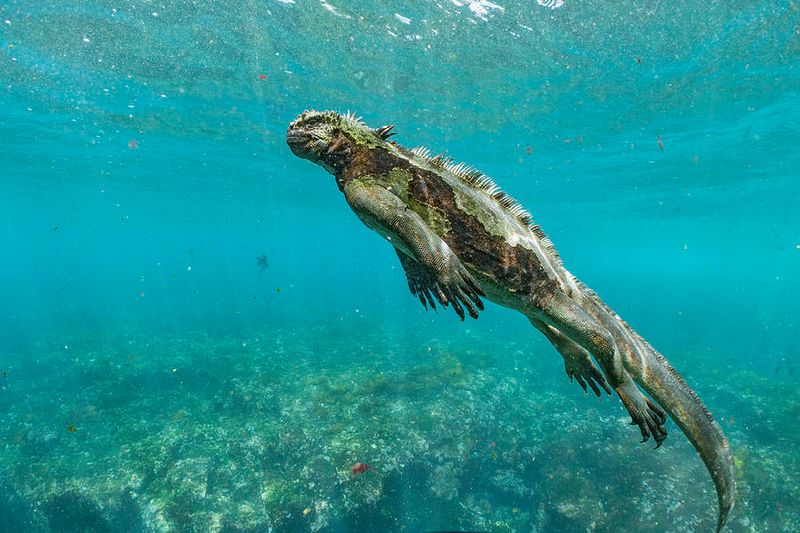
Ever seen a lizard surfing the ocean waves? The marine iguana is the sole lizard capable of swimming in saltwater. Equipped with a flat tail, it navigates the ocean currents with grace. Its streamlined body and strong limbs aid in effortless swimming.
While foraging, they dive up to 65 feet, showcasing their aquatic prowess. This unique ability helps them feed on underwater algae, their primary diet. Imagine watching a reptile executing such aquatic acrobatics!
It’s a spectacle that leaves observers in awe. Their swimming skills reflect a perfect blend of evolution and adaptability.
Distinctive Appearance
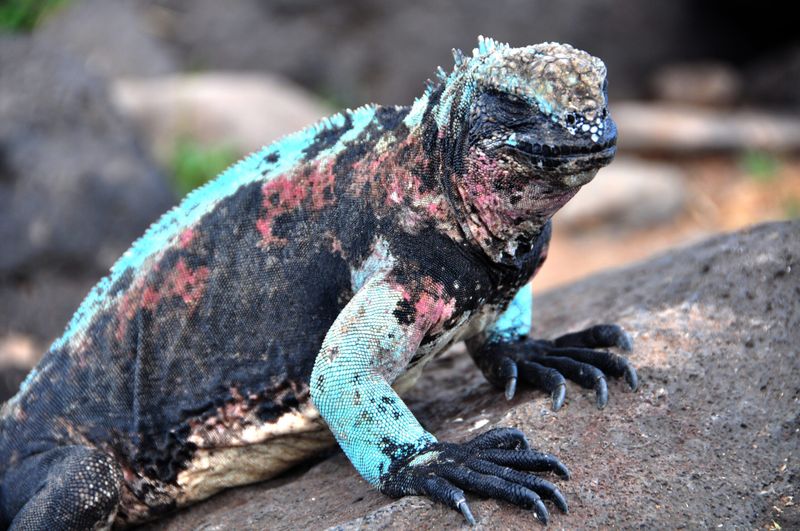
Marvel at the rugged beauty of the marine iguana, with its spiky crest running along the back. Its skin, often covered in a fine layer of salt, gives it a distinctive, almost prehistoric look. These iguanas come in colors ranging from black to gray, with occasional patches of red or green.
The vibrant hues are more pronounced during mating season, adding to their allure. Their unique appearance not only makes them visually fascinating but also aids in thermoregulation and camouflage. These features make them stand out as one of nature’s true originals.
Thermoregulation Mastery
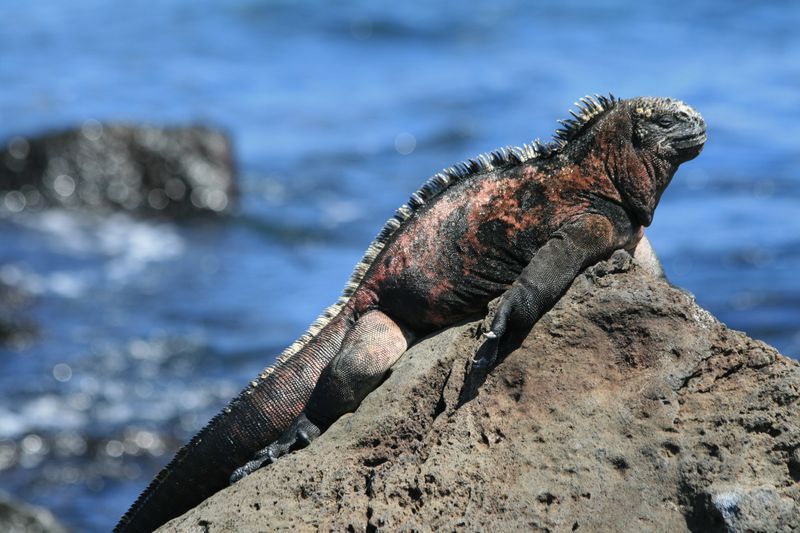
To survive the chilly waters, marine iguanas are experts in thermoregulation. After a dive, they bask in the sun, absorbing heat to raise their body temperature. Utilizing dark skin helps them soak in sunlight more efficiently.
This behavior is crucial as their body temperature can drop significantly during ocean excursions. By warming themselves on lava rocks, they restore energy and vitality. Observing them sprawled out on sunlit stones is like witnessing a timeless ritual.
Thermoregulation showcases their resilience and adaptation to challenging environments.
Specialized Diet
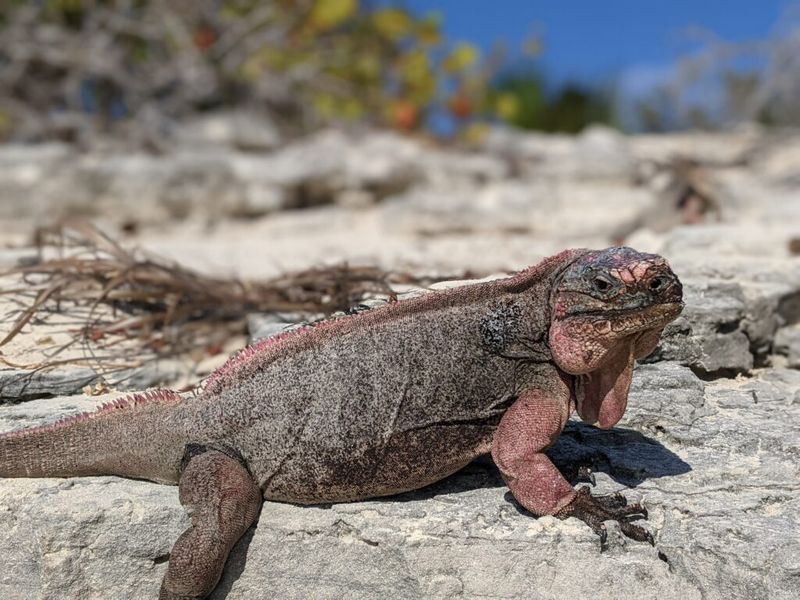
The marine iguana’s diet is as fascinating as its swimming. They primarily feed on algae, scraped off underwater rocks with their sharp teeth. This specialized diet supports their unique lifestyle and aquatic ventures.
During low tide, they may forage closer to shore, occasionally nibbling on terrestrial plants. Their ability to adapt their diet based on environmental conditions is impressive.
By consuming algae, marine iguanas play a crucial role in maintaining the ecological balance of their habitat. They are a testament to nature’s intricate food web.
Unique Social Behavior
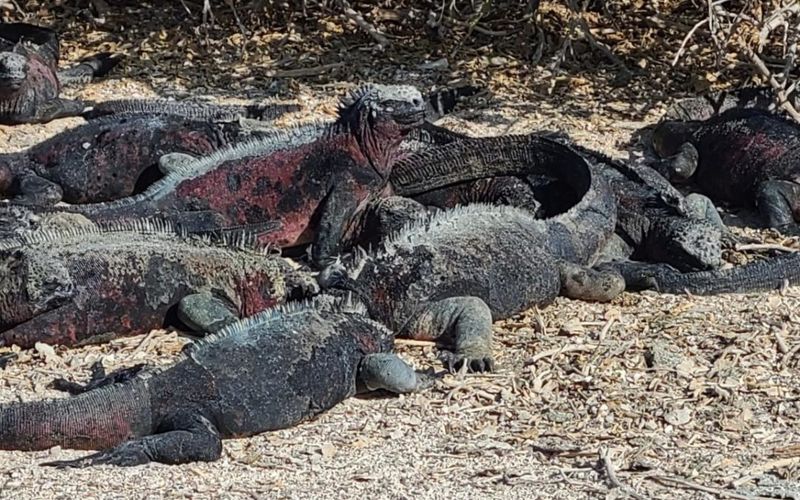
Marine iguanas exhibit intriguing social behaviors. Often found in large colonies, they gather in sunny spots to bask collectively. This social sunbathing is believed to enhance their thermoregulation and protection against predators.
Their social dynamics are a wonder to observe, with interactions ranging from gentle nuzzling to playful scrambles. Such communal gatherings highlight their sociable nature and reliance on group living.
Their ability to coexist harmoniously is a model of community living in the animal kingdom, illustrating a balance between individuality and social cooperation.
Adaptation to Salty Diet
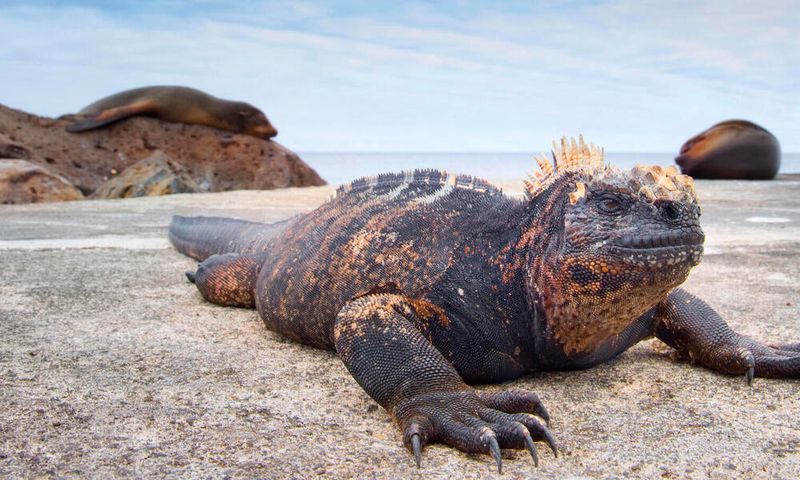
Have you ever seen a lizard sneeze? Marine iguanas have a unique adaptation to their salty diet. They expel excess salt by sneezing, a process made possible by specialized glands near their nostrils.
This adaptation prevents salt build-up, ensuring their internal balance remains intact. Watching a marine iguana sneeze salt crystals is both amusing and astonishing.
It exemplifies evolution’s ingenious solutions to environmental challenges. Their ability to thrive on a saline diet sets them apart, marking their place as one of nature’s most adaptable creatures.
Galapagos Exclusive
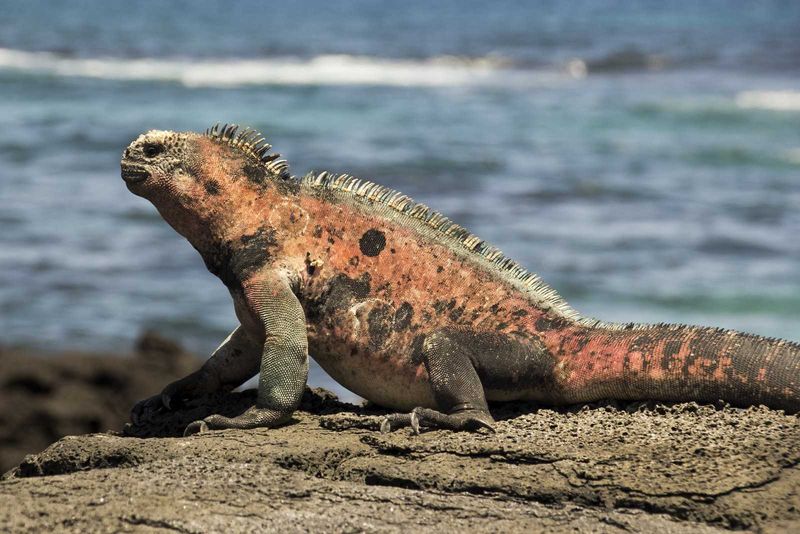
The Galapagos Islands serve as the exclusive home to marine iguanas. These islands provide the perfect environment for their unique lifestyle. From rocky shores to expansive coastlines, the Galapagos offers diverse habitats.
This exclusivity underscores their significant role in the island’s ecosystem. Their presence is crucial for maintaining the delicate balance of life there.
Their status as endemic species makes them even more special, drawing researchers and tourists alike. Protecting their habitat is essential for their continued survival, making conservation efforts critical.
Mating and Reproduction
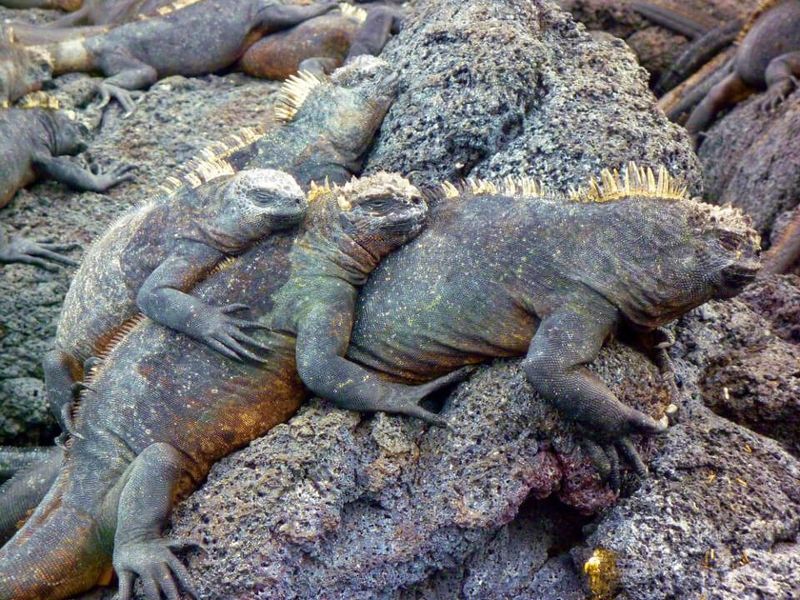
Marine iguanas display vibrant colors during the mating season, with males showcasing more vivid hues to attract females. Their courtship rituals are fascinating, with head-bobbing and physical displays of strength.
Nesting takes place on sandy shores, where females lay eggs. These eggs are buried to ensure protection from predators and environmental hazards. The entire reproductive process is a testament to their survival instincts.
Understanding these rituals offers insights into their complex social structures and evolutionary success. This colorful spectacle adds to the allure of marine iguanas.
Challenges and Threats
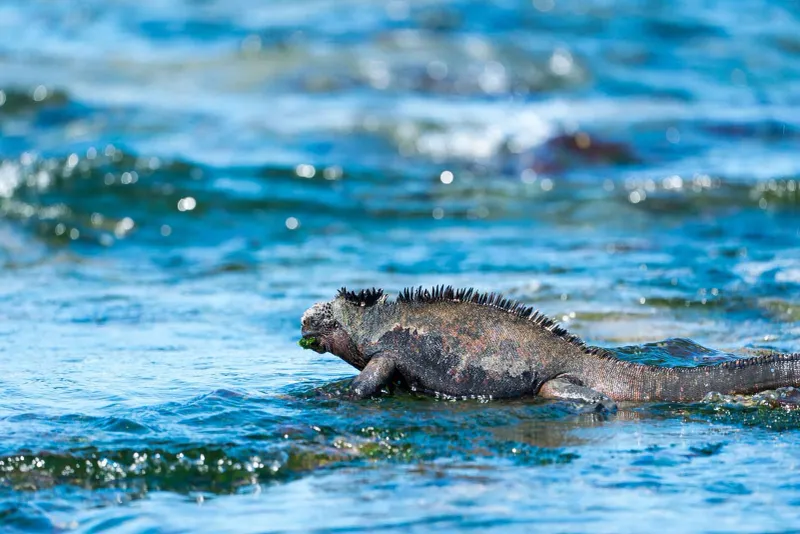
Despite their resilience, marine iguanas face numerous threats. Predators like hawks and feral animals pose a constant danger. Environmental changes and human activities exacerbate their survival challenges.
Climate change affects their food sources, while pollution threatens their habitats. Conservation efforts are vital to mitigate these threats.
Raising awareness about their plight is crucial for ensuring their survival. The story of the marine iguana is a reminder of the fragility of life and the importance of preserving our planet’s biodiversity.
Conservation Efforts
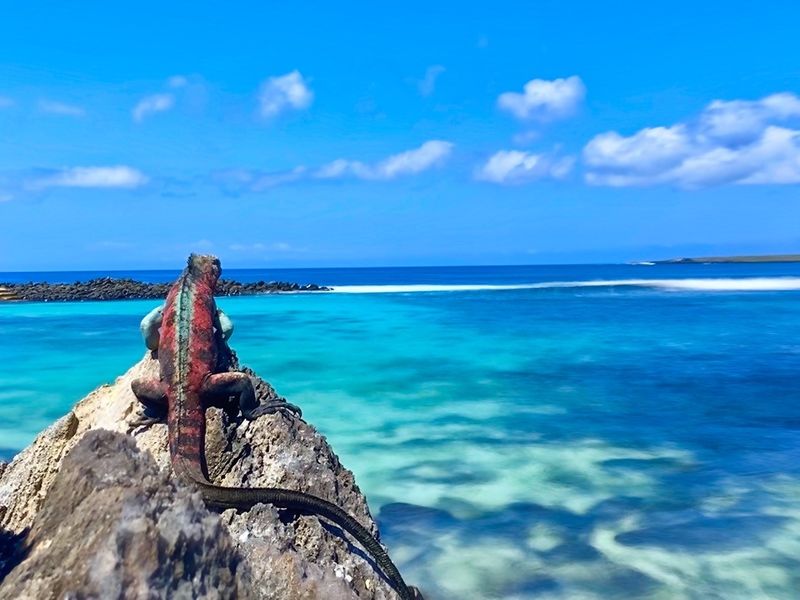
Efforts to conserve marine iguanas are critical for their survival. Conservationists work tirelessly to protect their habitats and educate the public.
Initiatives focus on reducing human impact, controlling invasive species, and monitoring environmental changes. These efforts are vital for maintaining the delicate balance of the Galapagos ecosystem.
By supporting conservation programs, we contribute to the preservation of these remarkable creatures. Their survival depends on our commitment to safeguarding their natural world, ensuring future generations can marvel at their unique existence.

